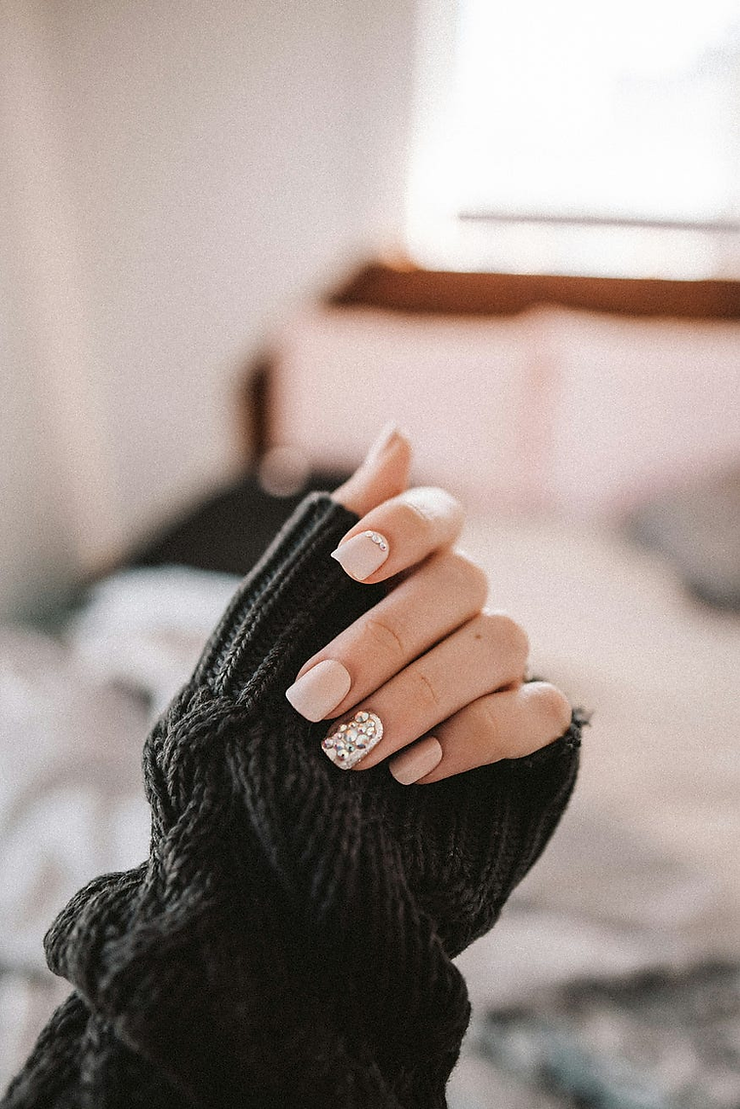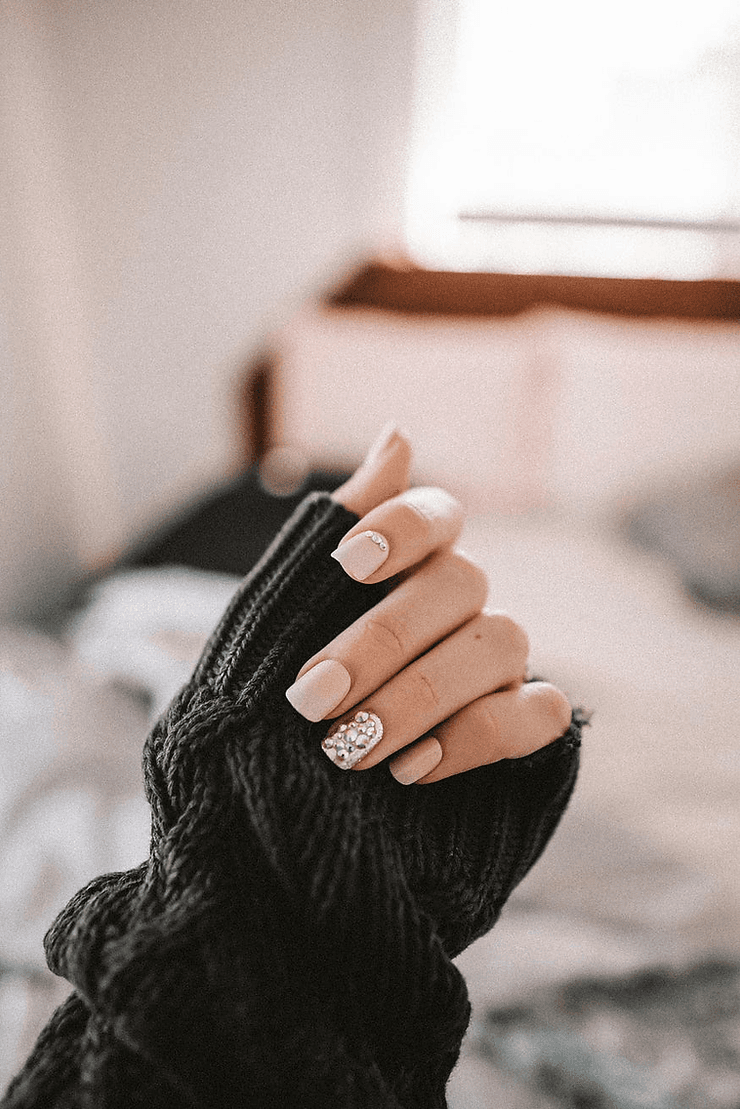The Acrylic Nails Epidemic
Acrylic nails are created from a combination of liquid monomer and powder polymer that is molded and shaped into your desired length onto your natural nails. They are strong, durable, and long-lasting. However, these fake nails are harming the environment, and are also very harmful to humans’ long-term health.

Acrylic nails, or artificial nails, are fake nails created from a combination of liquid monomer and powder polymer. The mixture is molded and shaped into your desired length onto your natural nails. Recently, they have become trendy amongst all ages due to their strength and durability, which make them very long-lasting. They are perfect for any occasion, and are especially becoming more popular with the summer weather. They do not chip or break easily, differing from natural nails and regular nail polish. In addition, many people like them because they make your nails look long and neat.
However, from the preparation of the nails onto one’s hand to the poor disposal of the nails once they fall off, these fake nails harm the environment. Not only do these artificial nails release microplastics into the environment, but they are also very harmful to humans’ long-term health.
The Origin of Acrylics

Artificial nails can be seen throughout many time periods and groups of people in history. They emerged as early as ancient civilizations, and were considered to be a symbol of nobility in the social hierarchy. During this time, people used a diverse variety of materials including bone, ivory, and gold to mimic a nail extension.
For example, Egyptian women’s long nails represented healthy living and wealth. They accessorized their nails with diamonds or other expensive materials and designs, which showed off a person’s wealth.
As for modern artificial nails, acrylic nails were invented by chance in 1954 by dentist Frederick Slack. Slack broke his nail at work and constructed a fake nail to cover his broken one using his dental acrylics. After this accident, people adopted this trend and started commonly wearing fake nails. False nails are now a staple and a norm in our society.
Environmental Harms

Acrylic nails are non-biodegradable and a form of toxic waste in our environment. Because acrylics are plastic, the plastic nails stay in the environment and do not decompose. This creates excessive amounts of plastic that cannot be recycled. These plastics remain in the environment for many lifetimes.
Poor disposal of these nails leads toxic chemicals within our biosphere, including toluene, dibutyl phthalates, and formaldehyde, to leach into soil or water. This creates pollution.
In addition, designs on top of the nails, such as glitter, contain microplastic materials that end up in our environment. It is almost impossible to get rid of these microplastics, as they are not only very small, but also present in large quantities. Microplastics are extremely harmful to humans, as they can enter people's bodies and cause many long-term and short-term health effects. Microplastics increase people’s risk of having a heart attack and other cardiovascular problems. In the short term, exposure to microplastics in humans results in airway inflammation and difficulty breathing.
Health Concerns

Not only does breathing in microplastics via nose or mouth contribute to cardiovascular health concerns, but constantly having acrylic nails on can irritate your natural nails.
Allergic reactions can occur from the chemicals used to apply or remove artificial nails. For example, your nails may burn, become swollen, become red and inflamed, or even develop pus around them. Allergic reactions can damage your natural nails, which can lead to nail thinning and easily broken nails. This can take many weeks to get back to normal.
Bacterial or fungal infections can also occur under the acrylic nails. These infections occur when acrylic nails are being neglected. Moisture develops under the acrylic nails, which can cause greenies. Greenies are an infection of one’s natural nails that leads to a greenish discoloration on the surface of the nail. To treat a greenie, one must keep the nail dry to stop the spread of bacteria and, in the meantime, stop applying false nails until the nails are treated. This infection can occur if you reglue the artificial nail before cleaning both your fake and real nails.
What Can You Do?

Many people feel that it is a must to have perfect nails on an everyday basis. To keep the environment safe, there are many different alternatives to acrylic nails.
Press-on nails are a great alternative to acrylic nails. These nails can be reused many times with proper preparation and care. There are no harsh chemicals that you are breathing in, as the nails are already prepped and ready for use. These nails can be applied at home as well, and can save you money.
In addition, gel nail extensions are also an amazing alternative to acrylic nails. They are much healthier for your natural nails and are also safer, as they do not use so many harsh chemicals, so you are not breathing in as many bad chemicals into your lungs. However, gel nail extensions do have their own flaws and should not always be used as a substitute.
The best alternative to acrylic nails is painting your natural nails at home with nail polish. It is very cost-effective and environmentally friendly compared to acrylics.
Recap
Acrylic nails are created from a combination of liquid monomer and powder polymer that is molded and shaped into your desired length onto your natural nails. They are strong, durable, and long-lasting. However, these fake nails are harming the environment, and are also very harmful to humans’ long-term health.
Acrylic nails are non-biodegradable and are a form of toxic waste in our environment. Glitter in nail polish containers are microplastic materials that end up in our environment. Microplastics are extremely harmful to humans and can increase people’s risk of having a heart attack or result in airway inflammation.
Improper care of acrylic nails can result in irritation and infection, which can be very painful. As such, the best alternative to acrylic nails is to paint your regular nails at home with nail polish. It is very cost-effective and environmentally friendly compared to acrylics.
